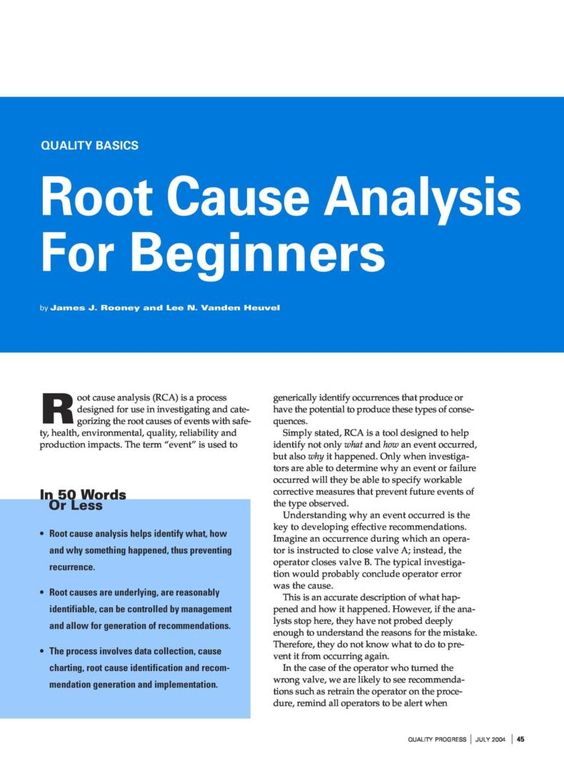Root cause analysis is a problem-solving technique that is used to identify the underlying cause of a problem or issue. By identifying the root cause, organizations can take steps to prevent similar problems from occurring in the future. Root cause analysis is an important tool for continuous improvement and is used in a variety of industries, including healthcare, manufacturing, and service organizations.
What is Root Cause Analysis?
Root cause analysis is a systematic and structured approach to identify the underlying cause of a problem. It is a tool used to determine why a problem occurred and what steps can be taken to prevent it from happening again. Root cause analysis can be used to solve a variety of problems, including quality issues, safety incidents, and process failures.
The Benefits of Root Cause Analysis
Root cause analysis provides several benefits, including:
- Improved problem-solving skills: Root cause analysis helps individuals and organizations to become better problem-solvers by forcing them to think critically about a problem and identify its underlying cause.
- Increased understanding of processes: By examining a problem in detail, organizations can gain a deeper understanding of their processes and identify areas for improvement.
- Reduced waste: By identifying the root cause of a problem, organizations can eliminate waste and improve their processes, resulting in cost savings and increased efficiency.
- Improved customer satisfaction: Root cause analysis can help organizations to identify and resolve customer complaints, leading to improved customer satisfaction and loyalty.
The Steps of Root Cause Analysis
The steps of root cause analysis include:
- Define the problem: Clearly identify the problem and define its scope.
- Gather data: Collect data related to the problem, including any relevant documents, data sets, and witness statements.
- Identify potential causes: Generate a list of potential causes by asking “why” questions.
- Evaluate causes: Evaluate each potential cause to determine if it is a contributing factor.
- Identify the root cause: Use the data and evidence gathered to identify the underlying cause of the problem.
- Develop a solution: Develop a solution to address the root cause and prevent the problem from occurring in the future.
- Implement the solution: Implement the solution and monitor its effectiveness.
- Evaluate the results: Evaluate the results of the root cause analysis to determine if the problem has been resolved and if the solution is effective.
Root Cause Analysis Techniques
There are several root cause analysis techniques, including:
- Fishbone Diagram: Also known as an Ishikawa diagram or cause and effect diagram, this technique is used to identify the possible causes of a problem.
- Whys: This technique involves asking “why” questions to identify the root cause of a problem.
- Pareto Analysis: This technique is used to identify the most important causes of a problem and prioritize actions.
- Fault Tree Analysis: This technique is used to identify the contributing factors of a problem and the likelihood of their occurrence.
Root Cause Analysis in Healthcare
Root cause analysis is an important tool in healthcare for improving patient safety and quality of care. Root cause analysis can be used to identify the causes of adverse events, medical errors, and near-misses. By identifying the root cause, healthcare organizations can take steps to prevent similar incidents from occurring in the future.
You might find these FREE courses useful:
Root Cause Analysis in Manufacturing
Root cause analysis is widely used in manufacturing to identify the causes of production problems and quality issues. By identifying the root cause, manufacturers can improve their processes, reduce waste, and improve their bottom line. Root cause analysis can also be used to identify the causes of equipment failures and to develop preventative.






